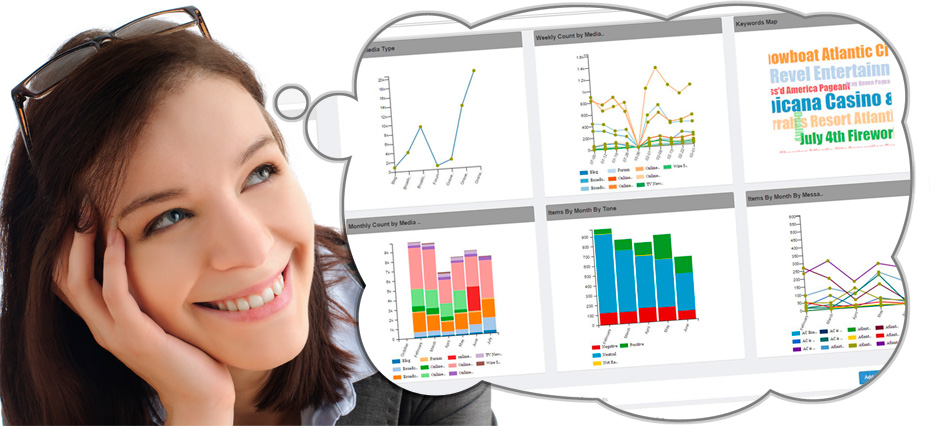“Speak” to your audience, but “listen” to them, as well – What is social listening?

Over the last decade, social networking tools caused a multilevel revolution. The truth is that before Facebook and Twitter appear, businesses could not even imagine that they would be able to communicate directly with their audience in real time, globally.
By the beginning of 2018 (all over the world), the total accounts in one or more social media were about 3 billion users, with Facebook still holding the reins of the digital networking “counting” 2 billion active accounts. Next in the list are YouTube with 1.5 billion accounts, Instagram with 800 million users and Twitter with 330 million users. The vast majority (91%) of businesses use two or more social media, while (as a Nielsen study revealed) the 93% of the total decisions over purchases affected by social media.
With no doubt social platforms are considered a great “force” in the modern world, which can influence or even change public opinion. There are several companies that have “integrated” social networking in their broader marketing strategy, while others use them as the main tool to promote their products and services, having already a web site.
Social media, just like web sites, become part of the company giving businesses the ability to “extract” basic and useful information that can lead to valuable conclusions. This can be achieved through the implementation of Social Listening.
Social Listening is the Social Media tracking process concerning to specific topics, keywords, phrases, references, conversations, brand names and competitors through appropriate apps and tools, which not only allow the monitoring of public reactions, but at the same time identify and analyze their feelings.
These tools are “Social Media Marketing” software products and are selected according to their characteristics, requirements and business needs. There is also a portion of companies which outsource custom-made programs.
The “Social Listening” platforms are able to bring together all the news, videos, and discussions, published in Social Media and more widely on the Internet to further analyze the data.
Users have access to their business and brand information in real-time by watching a positive or negative post, and an alert service for the user is available for any crisis may arise (Crisis Management).
At the same time, they can manage and monitor multiple profiles and networks through a dashboard, create campaigns simultaneously, measuring their effectiveness.
Finally, with the use of state-of-the-art technology that harnesses the collected data, emotions (positive, neutral, negative) are classified into a wide range of thematic categories. In this way, real-time monitoring and analysis of the audience is available.
Social Listening is an excellent tool through which businesses perceive their presence in the online environment. Implementation is vital for the following reasons:
Creates Successful Content Management: Searching for the best content through the implementation of Social Listening tools leads to the creation of personalized content that is tailored to the company’s target group. Indeed, creating the right content can be particularly useful in enhancing the overall marketing strategy, the website, the landing pages as well as SEO. And, combined with trends in Social Media, the results are even more impressive!
Effective customer service: Immediate solutions to improve your service, can be achieved by understanding what motivates consumers to choose any brand. A flexible Social Listening tool can be extremely important to maintain the company’s reputation since it supports interaction with dissatisfied customers who may post negative comments. This can only be done through continuous monitoring, so that the company can have an immediate response in managing those comments.
A new research tool: Social Listening, it has somehow replaced the questionnaire used in consumer research with quantitative and qualitative methods of research and analysis. The public (unwittingly) reveals through his reactions, postings and conversations, opinion on the brands without even having to ask them to fill in a question form!
Effective Community Building: Social Listening can be applied to businesses of all sizes, contributing significantly to community building. Through data collection, potential customers as well as influencers can be identified. Communication and interaction with the audience gradually upgrades the image of the brand, creating a community of “loyal fans”.
Discovering opportunities and the effects of competition: Keywords are suitable for gathering useful information on a company’s industry and its competition. That may create a basic competitive advantage.
Creating authentic content through the customer-centric approach: Every advertising campaign must be an inspiration for the users of every social network, matching with the feelings, the values and the perception of the relevant public. Consequently, monitoring consumer behavior helps to create successful campaigns, according to the findings. In addition, timing is of high importance while building a positive brand image.
Successful branding: Social Listening promotes successful branding, which enhances the brand’s recognition, improves its image, by increasing brand loyalty and sales!
Strengthening sales: Tracking online “behavior” and monitoring competition, can reveal consumers’ intention to purchase a product. Incorporating CRM into this kind of information, return on this investment can be achieved, through sales increase.
The goal is to create and execute the appropriate communication strategy: Social Listening is the “link” for all strategic corporate communication processes. Specialized analysis may give important conclusions on how the products or services stand in the digital environment, and that can improve the corporate image.
Since measurement is the cornerstone of every marketing activity, the usage of social media should create measurable results. By collecting and exploiting the information exported through Social Listening, a tailor-made strategy for every communication policy can be drawn, which should be flexible as well, adapted to changes that may happen.

